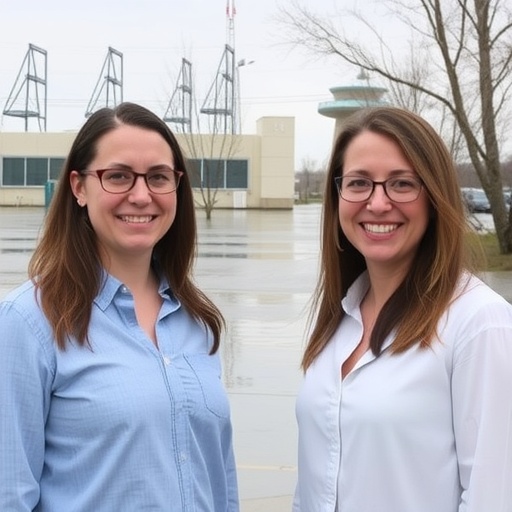In an era defined by an explosion of data collected from satellites and countless ground sensors, the challenge no longer lies in obtaining information but in discerning which datasets yield the most accurate and actionable insights. This question takes on critical importance in the context of flood insurance—a sector where timely and precise data can make the difference between financial ruin and recovery for vulnerable populations. A recent study led by researchers at the University of Arizona offers groundbreaking insights into how the choice of data fundamentally influences the efficiency and reliability of index-based flood insurance programs, especially in flood-prone regions such as Bangladesh.
Flood insurance programs increasingly depend on indices constructed from environmental proxies rather than direct damage assessments. These indices, typically comprising thresholds derived from rainfall measurements, river gauge readings, and satellite observations, trigger insurance payouts automatically once certain conditions are met. However, the science behind selecting which data sources to incorporate into these indices remains underexplored. Given the high stakes involved, imprecise or delayed insurance payouts can exacerbate the economic and emotional toll on affected communities.
The interdisciplinary team, including PhD candidate Alex Saunders and several esteemed faculty members from the University of Arizona, partnered with experts from Virginia Tech and Bangladeshi institutions to embark on a meticulous evaluation of flood-related datasets collected during Bangladesh’s monsoon seasons from 2004 through 2023. Their approach compared five distinct data streams: conventional rainfall data, river height measurements from stream gauges, flood maps generated by the national flood agency, and two satellite-based water coverage assessments, one utilizing traditional remote sensing techniques and the other employing cutting-edge artificial intelligence tailored to identify flood dynamics amidst pervasive cloud cover.
Through rigorous statistical analysis and data modeling, the researchers reconstructed a simulated flood insurance framework to assess how different input data influenced key factors such as the timing of payout triggers, the consistency of event detection, and the predictability of financial liabilities over a 20-year span. Their findings elucidate a nuanced landscape: no single dataset consistently outperformed the others across all metrics and regions. Local geographic variations rendered some datasets less dependable when applied at subnational scales, underscoring the complexity of flood phenomena and the spatial heterogeneity inherent in hydrometeorological monitoring.
Of particular note was the AI-enhanced satellite remote sensing model, which demonstrated superior capability in detecting and tracking flood progression even under persistent cloud cover—a common obstacle in optical satellite imaging. This model not only enabled earlier payout triggering by approximately one week on average compared to traditional satellite methods but also reduced uncertainty in expected insurance liabilities by over 20%, suggesting significant potential for lowering overall program costs and enhancing financial resilience.
The study highlights that while stream gauges offer precise measurements of river height, such metrics alone may not reliably correspond with actual flood inundation or exposure to at-risk populations. Conversely, satellite data provide expansive spatial coverage capturing large-scale surface water dynamics, but traditional optical sensors struggle with cloud interference, limiting temporal resolution. Rainfall data, abundant and well-established, serve as indirect indicators; however, precipitation does not always translate directly into flooding due to complex hydrological pathways and catchment characteristics.
By integrating multiple datasets and cross-validating indices derived from diverse sources, the research illustrates how flood insurance programs can improve their robustness and reduce the frequency of missed or spurious payout events. This multidimensional data fusion approach advocates against reliance on singular data streams, emphasizing instead a composite strategy that leverages the strengths of complementary measurement technologies.
These findings bear significant implications beyond Bangladesh. As climate change intensifies the frequency and severity of flood events globally, the demand for effective financial tools that can rapidly mobilize resources to affected populations escalates. Precision in flood detection and timely payout facilitation can profoundly impact individuals’ ability to recover, rebuild, and maintain socioeconomic stability during catastrophe aftermaths.
Moreover, the study underscores a critical consideration for insurers and policymakers alike: accessibility and novelty of data sources should not overshadow appropriateness. The easiest-to-access or newest datasets are not invariably the most suitable for specific scenarios. Thorough testing, contextual evaluation, and the incorporation of advanced computational methods such as artificial intelligence are essential to harness the full potential of Earth observational data in disaster risk management frameworks.
The overarching conclusion is clear: embracing a diverse arsenal of high-quality data, combined with sophisticated analytics, holds the key to designing more reliable, equitable, and cost-effective index-based flood insurance schemes. Such proactive adaptation is crucial for closing the substantial gap between enormous global flood losses – estimated at $1.77 trillion since 2000 – and the meager fraction currently insured, which stands at only 16 percent. Bridging this divide requires an integrated approach that aligns technological innovation with rigorous scientific inquiry.
Ultimately, the University of Arizona-led study serves as a clarion call for a paradigm shift in disaster finance, one that moves beyond simplistic, one-size-fits-all models toward dynamic, data-driven systems calibrated with precision. As we stand on the precipice of an increasingly uncertain climatic future, the intelligent deployment of satellite sensors, AI analytics, and ground-based monitoring promises not only to transform flood insurance but also to fortify global resilience against the mounting threat of natural disasters.
Subject of Research: Not applicable
Article Title: Sensitivity to Data Choice for Index-Based Flood Insurance
News Publication Date: 11-Sep-2025
Web References:
https://agupubs.onlinelibrary.wiley.com/doi/10.1029/2025EF005966
Keywords: Data analysis, Data visualization, Insurance, Floods, Natural disasters, Earth systems science, Atmospheric science, Climatology, Hydrology, Rain, Weather, Clouds, Rivers, Climate systems, Earth climate




